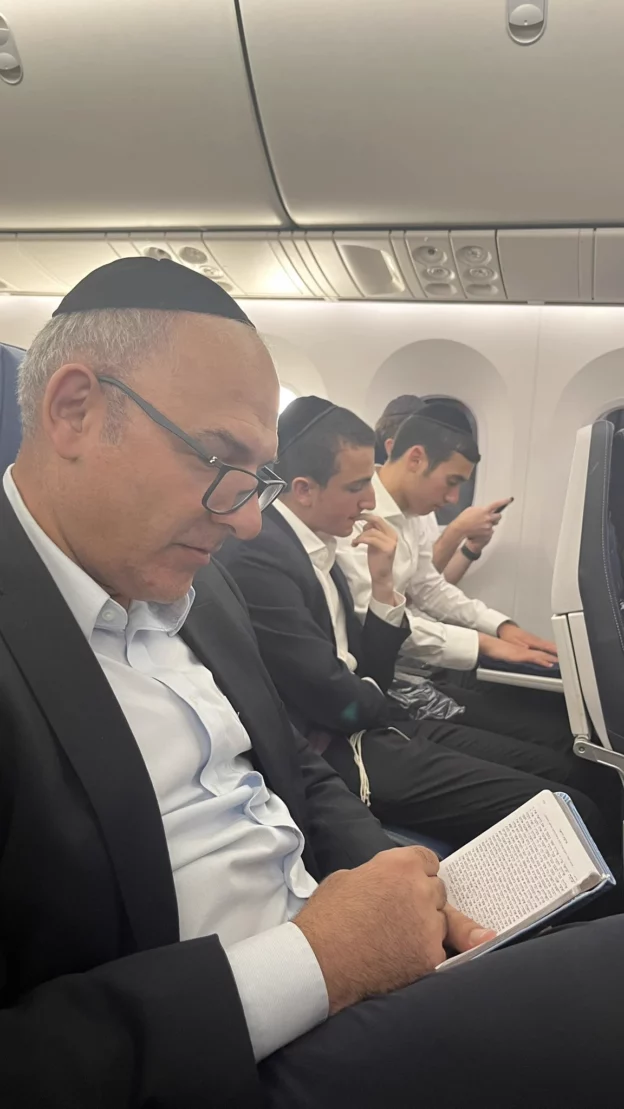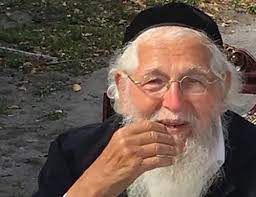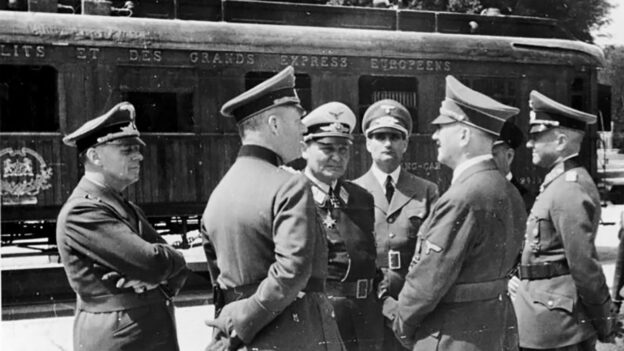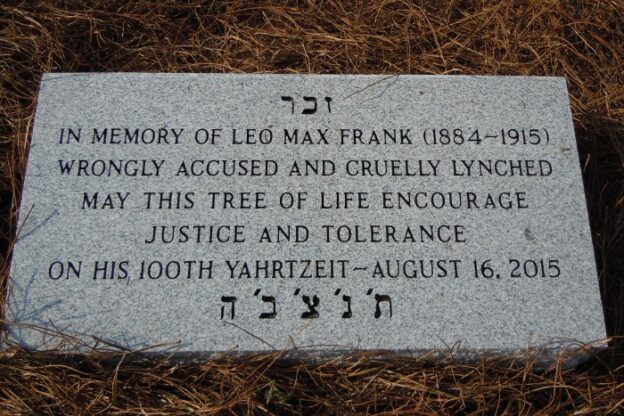“Of course, the average Gazan doesn’t endorse Hamas…” is a well-worrn media trope. And it has long stirred a question in my mind. To read what it was, and what its answer is, see here.


“Of course, the average Gazan doesn’t endorse Hamas…” is a well-worrn media trope. And it has long stirred a question in my mind. To read what it was, and what its answer is, see here.

Something in particular struck me about President Biden’s October 10 speech about Israel.
To read what it was, click here.

A piece I wrote about introspection in the wake of the recent Hamas atrocity was published at Forward, and can be read here.

To the Editor:
Re “Israel and Hamas Battle in Gaza as Netanyahu Warns of a Long War” (news article, Oct. 9):
Hundreds of Israelis — men, women, children, infants and the elderly — were dragged from their homes by Hamas operatives, and Israeli citizens were murdered in cold blood. Entire families were taken hostage.
Palestinians in Gaza gathered to celebrate the attacks. In the West Bank, residents danced and sang in the streets. In Beirut, children handed out candy to passing motorists and residents set off fireworks.
Whatever one’s opinion about Israel’s policies, those facts and what they say about the country’s enemies should be greatly enlightening.
(Rabbi) Avi Shafran
New York
The writer is the director of public affairs at Agudath Israel of America.

A piece I wrote about asylum seekers was published by Religion News Service, and can be read here.

I’m no fan of Israel’s National Security Minister Itamar Ben-Gvir. But he doesn’t deserve to be accused of saying something he didn’t say.
As I point out here.

It’s always irksome when news media report one side of a story without making the effort to see if there may be (as there always is) another side. This tends to happen quite often when the story is about religious Jews.
To read about a recent such example of journalistic malpractice (and an older one), click here.

The sorrow I felt at the news that Rav Aharon Schechter, zt”l, had been niftar from this world eventually gave way to the comforting image of his radiant smile and the memory of his personal warmth. And to a particular personal memory of a long-ago, unexpected phone call.
The Yeshivas Rabbeinu Chaim Berlin Rosh Yeshiva’s smile wasn’t born of any calculated forcing of will. It was simply his “default” expression, the physical manifestation of his simchas hachaim and ahavas Yisrael. It receded only when he was deep in thought, saying a shiur, pondering a she’eilah or formulating a response to a question, then giving way to a look of concentration. As soon as the contemplation was complete, the smile quickly, naturally, reasserted itself, coming again to the fore.
Rav Schechter’s brilliance and scholarship were recognized by Rav Yitzchak Hutner, zt”l, who tapped him to take his place in the yeshiva when Rav Hutner moved to Eretz Yisrael to found Yeshivas Pachad Yitzchak in Yerushalayim. And they are evident in “Avodas Aharon,” the sefer Rav Schechter authored back in the 1950s. And his eloquence, whether speaking in Yiddish or English, was striking.
Until illness limited him, Rav Schechter was constantly in the beis medrash, and even learned “bichavrusa” with talmidim. Under his direction and love, the yeshiva became a renowned makom Torah.
But it was his smile, his kindness, his ahavas Yisrael, his concern for everyone with whom he interacted, that first come to my mind when I think of him.
The sensitivity that characterized Rav Schechter was evident in much of what was recounted at his levayah. Although in her later years, his rebbetzin had become progressively unaware of her surroundings, her husband refused to recite kiddush on Shabbos until she was seated at the table, such was his respect for his eishes chayil, diminished in awareness or not. Once, leaving home for the chasunah of one of the rebbetzin’s relatives, he told her he was going to a chasunah. Why, he was asked afterward, didn’t he say whose chasunah he was attending. “I didn’t want her to feel bad that she isn’t able to go,” was his response.
I cannot claim the honor of having been a talmid of Rav Schechter’s. I first met him, briefly, in the early 1980s, when I was a rebbe in a mesivta in Providence, Rhode Island and, by then having become a member of the Moetzes Gedolei HaTorah, he visited the community. (That alone said much about him.)
He observed my shiur and even offered an observation about a perplexing Rashi to me afterward.
I wouldn’t hear his voice again for two or three years, on that phone call.
Those of a certain age might recall a controversy I inadvertently stirred up with an article I wrote in the much-missed Jewish Observer in 1986. On the heels of an earlier JO piece I had written about the radical Reform proponent Abraham Geiger, the magazine’s editor, Rabbi Nissan Wolpin, a”h, asked me if I would undertake one about the Jewish philosopher Moses Mendelssohn.
I said I would happily do so, but, having done some reading about Mendelssohn, knew that, despite the sad fate of his children and disciples, he was no reformer. Rabbi Wolpin insisted that all he was asking for was an accurate portrayal of the man and whatever thoughts I might have to offer about him.
The resultant article, “The Enigma of Moses Mendelssohn,” described him accurately, as having lived an observant Jewish life, even as, professionally, he moved in decidedly unJewish circles.
Although the JO’s respected editorial board, including Rav Joseph Elias, a”h, quite the expert on German Jewish history, had approved my article, it enraged some readers, who had coddled an image of the article’s subject as the “father of Reform.” They felt that my suggestion that Mendelssohn’s inability to keep his students or progeny within the Jewish fold lay in something subtle, a lack of true respect for gedolim of his era, was a whitewashing.
The brouhaha grew so frenzied that the question of how the Jewish Observer should respond was discussed by the members of the Moetzes Gedolei HaTorah. I was told that their ultimate decision – to have the JO express regret for having published the piece – was not favored by all the Moetzes’ members.
Far from the storm, in Providence, any bolts of lightning missed me, and I didn’t really feel its hailstones. But I was told that they were large and many. When I called the Agudah’s offices about something unrelated, the receptionist asked, under her breath, “How are you holding up?”
That’s when I realized that the storm had been upgraded to hurricane status. I was, understandably, not happy. I had, I thought, just reported facts and offered a theory. Some, though, felt I had attempted to rehabilitate a fiend.
When the JO’s apology for running my piece was published, Rabbi Wolpin called me and attempted to take the blame for the hubbub. But he had done nothing wrong. Neither he nor the members of the editorial board (nor I) had any reason to foresee the anger that had ensued.
I was understandably disheartened, though, by the disowning of what I had worked on so long.
It was a Motzoei Shabbos when the phone rang. Caller ID wasn’t yet a thing and so I had no idea who was calling. I picked up and said “Gut voch.”
The voice on the other end said, “This is Schechter.”
“Moishy!” I exclaimed, delighted to hear from my old high school classmate in Baltimore’s Yeshivas Chofetz Chaim, or “T.A.”
“No. Aharon.”
It took me a few seconds to realize whom I was speaking with. But the realization eventually dawned.
“Rosh Yeshiva!” I corrected myself. “I’m so sorry. I thought it was someone else.”
“That’s okay,” he responded. And then he got to the crux of the call. “I just wanted to wish you a gut, gebenched voch. That’s all.”
To say that the call was a balm or chizuk at a difficult time would be an understatement. I don’t recall exactly what I stammered in response to the Rosh Yeshiva’s wish, but I imagine I expressed my hakaras hatov for the call. I certainly felt it.
The kerfuffle over the Mendelssohn piece, like all storms, subsided with time. And, ironically, Rabbi Moshe Sherer, a”h, later offered me a position at the Agudah (which I initially turned down – another story there – but eventually accepted).
I’ve been with the Agudah now for some 30 years. And one of the great perks of working for the organization has been the ability to greet and speak with members of the Moetzes Gedolei HaTorah when they have come to the office to meet.
Approximately two years ago, Rav Schechter attended one such meeting; it would turn out to be his last. He was already physically compromised, but his smile was unfaded, bright as ever. When I went over to greet him, he warmly shook my hand.
And then he asked me if he could hold on to my arm as he made his way down the hall. I was sad that he needed support but couldn’t have been more honored. And that special memory of being able to be of some small assistance to the Rosh Yeshivah has joined the company of another special memory, of an unexpected phone call 35 years earlier.
© 2023 Ami Magazine

There are railcars and there are railcars.
A document from a horrible moment in Holocaust history was recently discovered by a Tel Aviv University PhD candidate. You can read about it here.

Last week, President Biden issued a presidential proclamation recognizing the horrific injustice that was the murder of Emmett Till, a 14-year-old whose brutal killing in Mississippi in 1955 helped galvanize the civil rights movement. A national monument is being created in honor of the murdered boy and his mother, Mamie Till Mobley, who forced the nation to confront the horror of what happened to her son.
What the revisiting of that evil brought to my mind was another lynching, of a Jewish man in Georgia decades earlier, in 1915. The murder of Leo Frank is a sad part of American history that should not be forgotten.
On April 26, 1913, a 13-year-old girl on her way to Atlanta’s Confederate Memorial Day parade stopped at her place of employment, the National Pencil Company, to collect her paycheck. The next day, she was found murdered in the factory’s basement.
Leo Frank, a 29-year-old Jewish man, was working at the factory that morning and handed the girl her pay. He was the last person to see her and so, when the murder was discovered the next morning, he came under suspicion and was arrested and jailed.
Police, however, had another suspect. Jim Conley, a custodian at the factory, who a witness saw in the factory basement washing out a shirt soaked with what appeared to be blood. Notes, filled with misspellings, were found alongside the murdered girl and Jim Conley was questioned.
After two weeks, he finally admitted writing the notes but said that Leo Frank had asked him to, and had confessed to the murder.
Conley signed contradictory affidavits, which were entered into the trial of Leo Frank. But the glaring inconsistencies were ignored by the jury.
As the trial took place, crowds gathered outside the courthouse chanting “Hang the Jew!”
Based on Conley’s claim and with no real evidence to implicate Frank, the four-week trial ended with a guilty verdict. Outside the courthouse, the crowd cheered the announcement. According to the New-York Tribune, the prosecuting attorney “was lifted to the shoulders of several men and carried more than a hundred feet through the shouting throng.”
The presiding judge, Leonard Roan, sentenced Frank to death by hanging. Appeals ensued for two years. And even after Conley’s former attorney said he believed his former client was the actual murderer, a retrial motion was also rejected.
The case ended up before the U.S. Supreme Court, which, in a 7-2 ruling, allowed Frank’s conviction to stand. Justices Oliver Wendall Holmes and Charles Evan Hughes dissented, stating that the hostility outside the courthouse influenced the conviction.
Georgia Governor John Slaton conducted his own extensive investigation into the case, and, on June 21, 1915, the day before Frank’s execution was to take place, commuted his sentence to life in prison. The governor wrote that “I would rather be plowing in a field than to feel that I had that blood on my hands.”
The community was outraged and Governor Slaton, whose term ended shortly thereafter, fled Georgia with his wife, fearful of the retribution local citizens might visit upon him for keeping the Jew alive.
On August 17, 1915, a mob of 25 men overpowered the guards at the prison farm where Frank was held and kidnapped him. They drove him some 100 miles to a grove near Marietta, handcuffed and hanged him. An approving crowd of some 3000 Georgians, including prominent local citizens, flocked to the lynching site, collecting souvenirs and taking photographs.
Nearly 70 years after the girl’s murder, on March 7, 1982, it was reported that Alonzo Mann, Leo Frank’s office boy, who was fourteen at the time of the killing, said that Conley had murdered the girl, and that he saw the custodian holding her. “If you ever mention this, I’ll kill you,” Conley had told him. Mann said that when he told his mother what he had seen, she told him to keep quiet. He did.
The new evidence led the Georgia Board of Pardons and Paroles to issue a pardon for Leo Frank – but only based on the state’s failure to protect him while in custody and for not bringing his murderers to justice. It did not, however, exonerate the innocent man.
A jury and judge, after all, had spoken.
© 2023 Ami Magazine